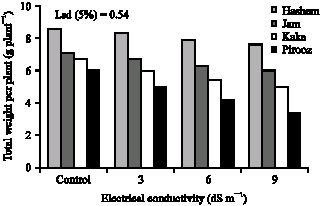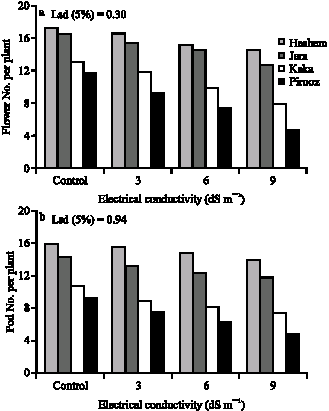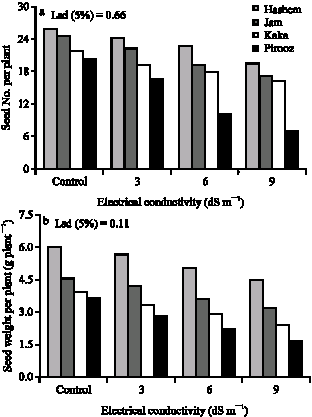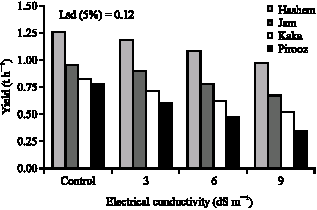Research Article
Effect of Salinity on Growth and Yield of Desi and Kabuli Chickpea Cultivars
Department of Agronomy and Plant Breeding, Faculty of Agriclture, University of Kurdistan, Sanandaj, Iran
Gholamreza Heidari
Department of Agronomy and Plant Breeding, Faculty of Agriclture, University of Kurdistan, Sanandaj, Iran
Behrooz Esmailpoor
Department of Horticulture, Faculty of Agriculture, University of Mohaghegh Ardabili, Ardabil, Iran












